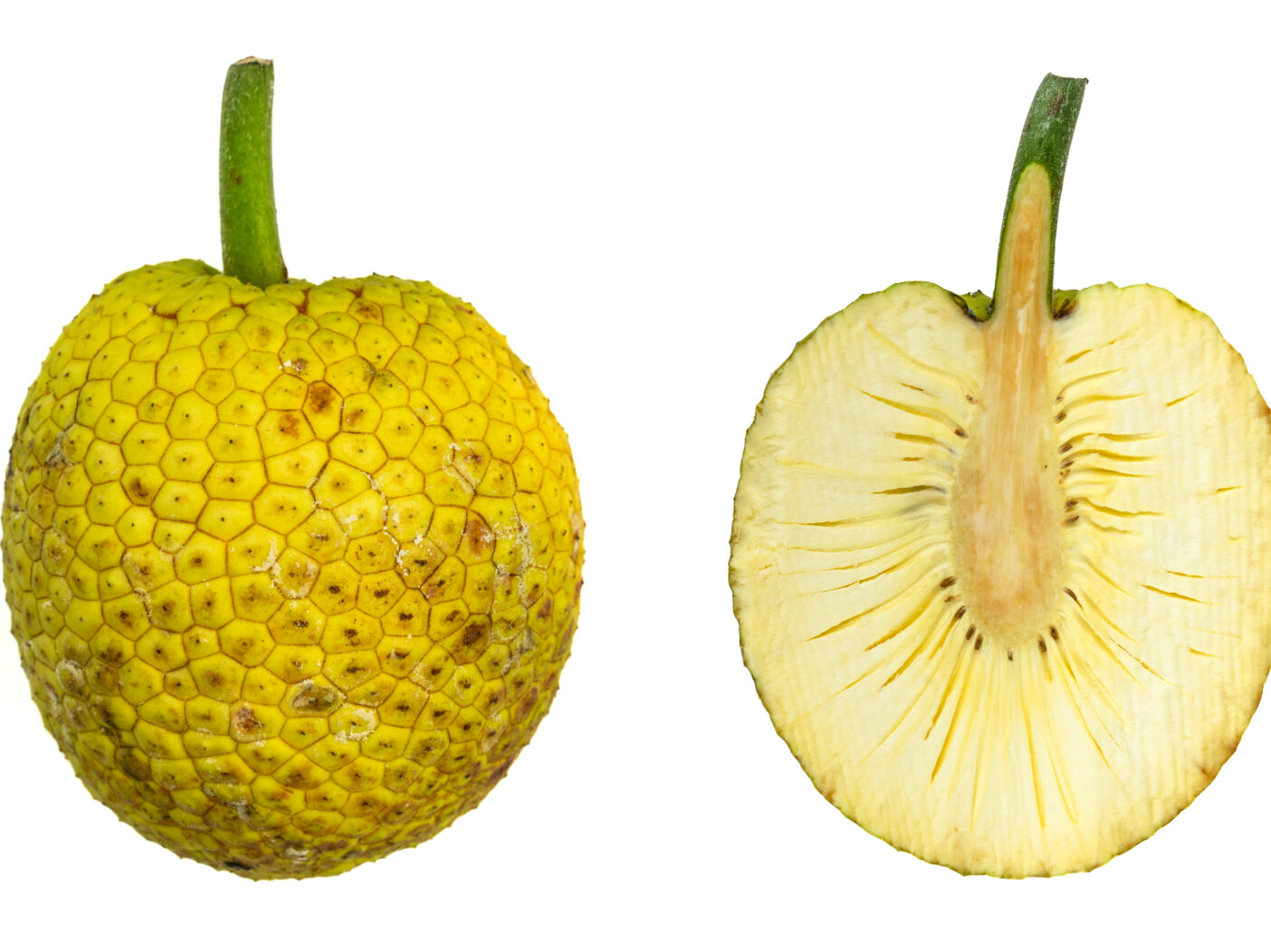
Photos by John Eder
My office can feel a little bit like a botanical newsroom. Today’s headline: We Have Breadfruit!
Matt Herrman, Curator of Special Collections, visits me to deliver the news. “It’s the first time we’ve had fruit,” he says. He reaches into a paper bag and pulls out a softball-sized object. It is yellow and covered in a textured skin that looks like flattened corn nuggets.
My curiosity is piqued.
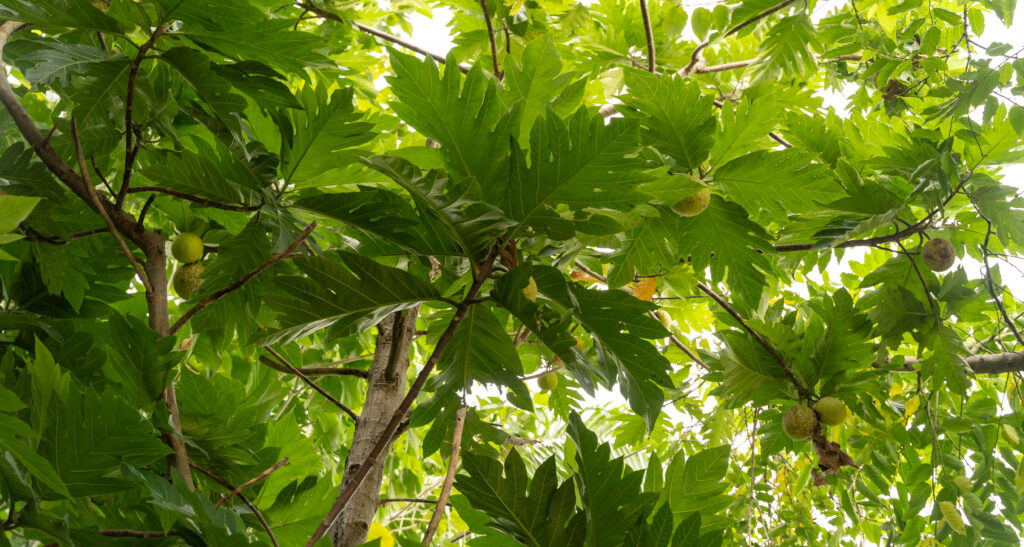
Breadfruit (Artocarpus altilis) is prolific throughout the tropical world, originating in the South Pacific where it is a staple of Polynesian culture, and common in places like the Caribbean, Central America, Southeast Asia, and parts of Africa. Herrman’s been trying to grow it since 2019 when we received four cultivars from the National Tropical Botanical Garden in Hawaii, which has an entire institute dedicated to breadfruit’s research, conservation, and agricultural and culinary potential.
In ultra-tropical locations, breadfruit trees can produce a whopping 450 pounds of fruit per season. But our occasional cold snaps have limited our specimens’ production. Herrman thinks the trees are now old enough and this winter was mild enough for one cultivar, Ma’afala, to fruit. Another tree, an unknown cultivar from the Fruit and Spice Park in Homestead, also produced its first fruits.
“I’m super excited,” he says. “I’ve been watching them.”
Most Americans aren’t familiar with breadfruit, excepting of course, anyone who has read the 1932 novel by Charles Nordhoff and James Norman Hall or seen any of its Hollywood renditions.
The story is based on the true tale of the HMS Bounty. In 1787, King George III dispatched Captain William Bligh and a crew of about 40 to Tahiti to amass breadfruit and transport it to the British-controlled Caribbean. The dense, nutrient-rich fruits were seen as an inexpensive way to feed the enslaved people tending the kingdom’s plantations.
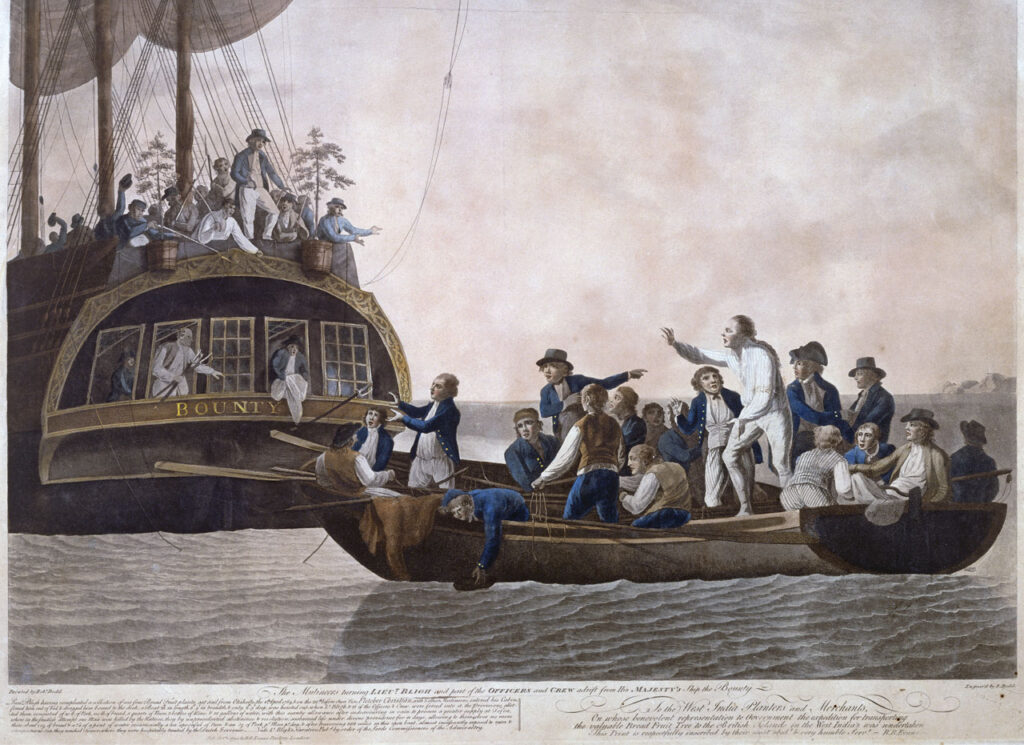
The crew, however, arrived on Tahiti too early to harvest the fruits and spent several months cavorting with the locals and enjoying the tropical sun. Unwilling to leave, captain’s mate Fletcher Christian led a mutiny, tossed the breadfruit overboard, and cast Bligh and 18 loyalists adrift on a lifeboat. (They survived in a remarkable feat of seamanship.)
Captain Bligh eventually did lead another excursion—this time successful—and introduced breadfruit to the Caribbean.
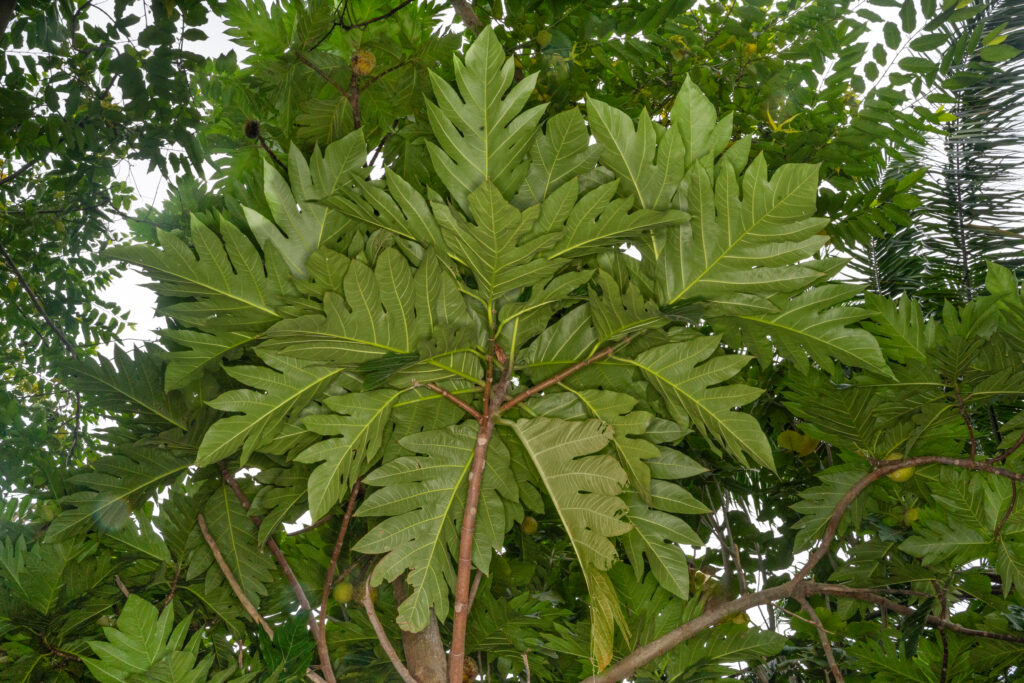
The breadfruit-slavery connection leaves a troubling legacy. But researchers believe breadfruit holds tremendous promise as a food source for a changing world. WIRED magazine this month declared, “Breadfruit is here to save the world” in a lengthy article extolling its low maintenance, high yield, and abilities to tolerate rising temperatures and degraded soils. The growing range suitable for breadfruit is expanding. Witness our fruiting trees.
Breadfruit reportedly got its name because it emits a bread-like smell when roasted over an open flame, in traditional fashion. It’s dense, too, like unleavened loaf, or maybe an undercooked potato.
“Do you want to taste it?” Herrman asks. He reaches into the paper bag again and pulls out a container of oven-baked breadfruit, seasoned with cumin, turmeric, coriander, and smoked paprika.
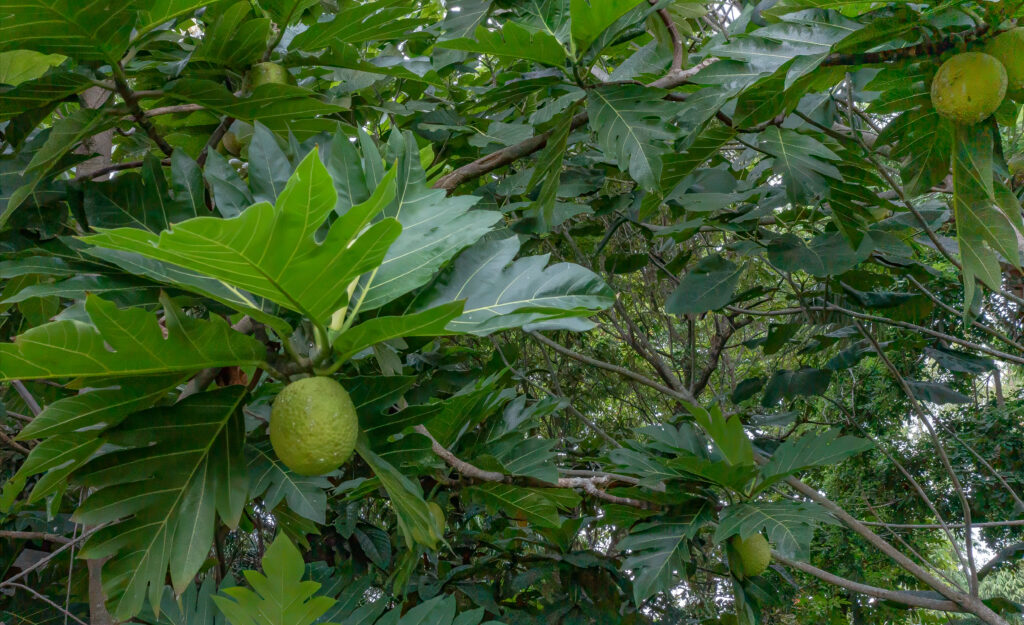
Breadfruit doesn’t have a lot of taste on its own, but it absorbs seasonings like these nicely. I imagine breadfruit would work well in a soup or roasted alongside more flavorful root vegetables. Breadfruit can be dehydrated and ground into flour, deep fried like a plantain, mashed and added to baked goods, among other things. The National Tropical Botanical Garden offers a list of recipes here.
It has more nutritional value than other starchy crops, with significant amounts of dietary fiber, iron, potassium, calcium, phosphorus, and magnesium, according to that garden’s Breadfruit Institute.
Breadfruit is not widely available in the United States. The fruits don’t ship well, and most regions are too cold—for now—to support groves. I wouldn’t be surprised if that changes, especially here in Florida with our increasingly mild winters and the agricultural void left by a shrinking citrus industry. In fact, Grimal Grove, the only commercial grove in the continental United States, is located on Big Pine Key. Its fruits are used to produce the first-known spirit made from breadfruit. The partnering distiller is cleverly named “Mutiny Island Vodka.” It is not available in our market yet, but you can explore purchasing options here.
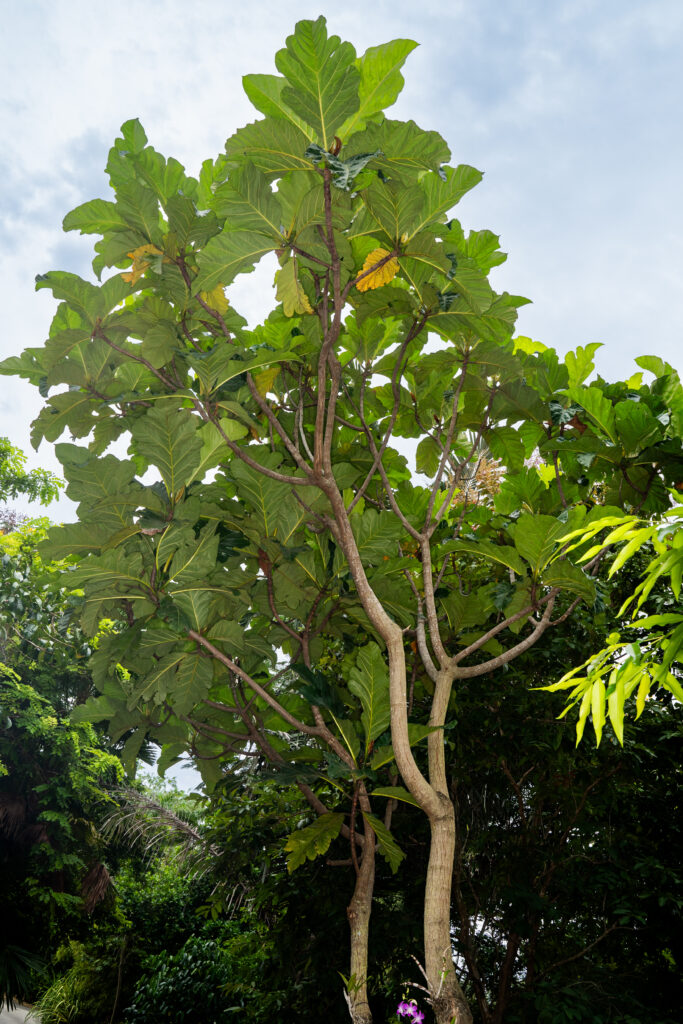
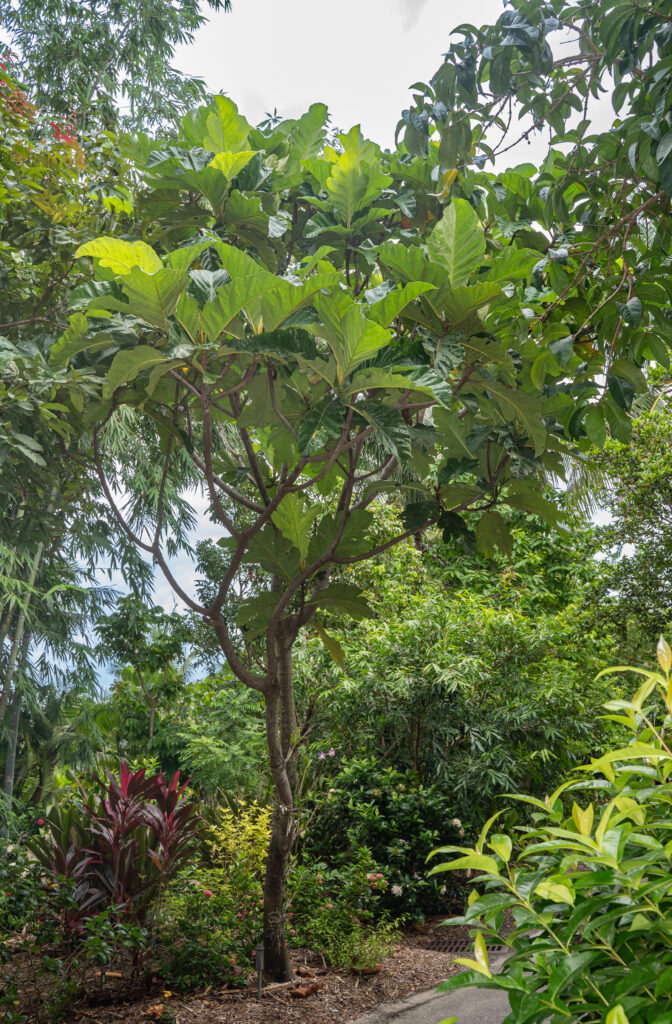
At the Garden, the breadfruit tree in fruit is visible from the “modern Asia” portion of the Lea Asian Garden. The second tree, the one sourced in Homestead, is found in the parking lot near the main entrance to the Chabraja Visitor Center. A wild relative, the breadnut tree (Artocarpus camansi), is also producing fruit and is located in the Asian Garden by the Cheryl and Phil Leone Thai Pavilion.

About the Author
Jennifer Reed is the Garden’s Editorial Director and a longtime Southwest Florida journalist.

